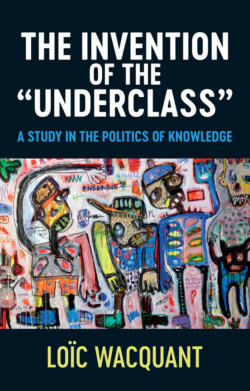Читать книгу The Invention of the 'Underclass' - Loic Wacquant - Страница 15
The “spiral to urban apartheid”
Оглавление“If the Negro population as a whole developed an even stronger feeling of being ‘penned in’ and discriminated against, many of its members might come to support not only riots, but the rebellion now being preached by only a handful. If large-scale violence resulted, white retaliation could follow. This spiral could quite conceivably lead to a kind of urban apartheid, with semi-martial law in many major cities, enforced residence of Negroes in segregated areas, and a drastic reduction of personal freedoms for all Americans, particularly Negroes.”
The Kerner Report: The 1968 Report of the National Advisory Commission on Civil Disorders, 1989 [1968].
Paradoxically, America’s obsession with urban pathology became fixated onto the black “ghetto” just as the latter was imploding under the press of deindustrialization, demographic transformation, and black protest – so that the term itself turned into the pejorative designation of an urban area of social disintegration, contrary to its dual historical reality as instrument of ethnoracial closure by whites and vector of African-American social cohesion and advancement for a half-century.48 As they spread, the riots came to frighten, not just whites in and out of the city, but also the African-American bourgeoisie committed to pressing for peaceful and gradual change through institutional means, and so they opened a social fissure between the black middle and working classes that would widen in subsequent decades.49 With buildings ablaze, rampant looting, reported sniper fire, rolling street clashes, and tanks patrolling its thoroughfares, it is no wonder the metropolis was diagnosed as acutely “sick,” downright “unheavenly,” and, to sum it all up, yet again “in crisis.”50 Foreboding invocations of “jungle,” “wilderness,” “lawlessness,” “psychological enfeeblement,” and “depravity” returned with a vengeance and crowded public discussion of the city’s fate while the country shuddered at the prospect of an all-out “race war” fought in the streets of its major urban centers.
As ingrained anxiety over the metropolis turned into scornful hostility, quiet rage, and vociferous antagonism toward disorderly blacks, state policies of “benign neglect” of race and urban inequality gave way to a comprehensive campaign of workfare disciplining, punitive containment, and brutal criminal sanction converging on (hyper)ghetto residents.51 The collective white trauma of the exploding city of the mid-1960s was reactivated by the Los Angeles riots of 1992 following the acquittal of the policemen responsible for the savage beating of motorist Rodney King.52 By then, “urban crisis” had become a polite scholarly and policy synonym for the volatile yet inextricable intersection of caste segregation, African-American marginality, and street violence. It expressed the growing “Fear of a Black Planet” – to borrow the title of the 1990 album by the Compton rap group Public Enemy – lodged at the heart of the decaying metropolis, a fitting fin-de-siècle avatar of the long American tradition of anti-urbanism.53 This fear is the collective emotion that propelled the “underclass” from the shadow of the race riots to the forefront of the academic and public debate.
